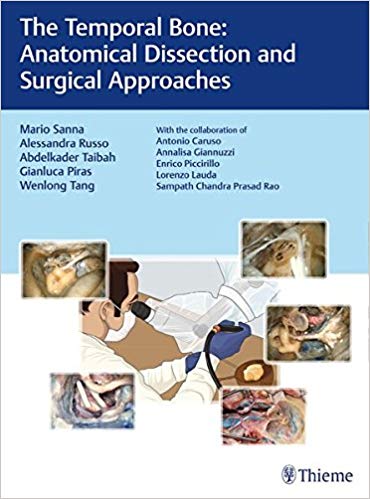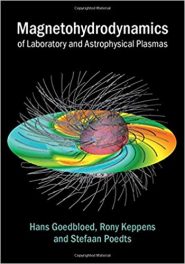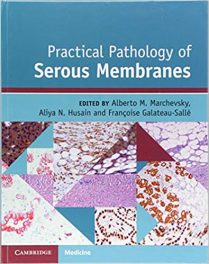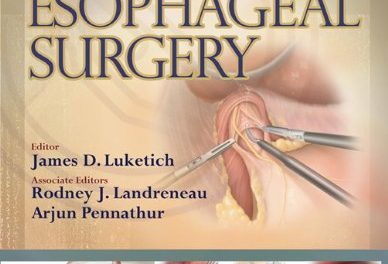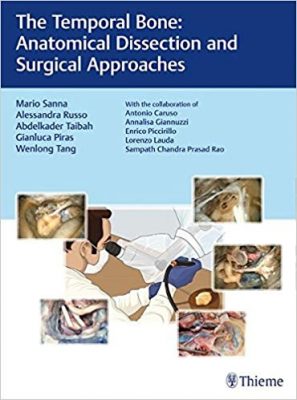 Authors: Mario Sanna MD, Alessandro Russo MD, Abdelkader Taibah MD, Gianluca Piras MD, and Welong Tang MD
Authors: Mario Sanna MD, Alessandro Russo MD, Abdelkader Taibah MD, Gianluca Piras MD, and Welong Tang MD
Publisher: Thieme – 197 pages, with 827 illustrations
Book Review by: Nano Khilnani
The anatomy of the temporal bone area is one of the most complex in the human body, and a thorough understanding of the structures and their relationships with other anatomical parts in the skull base area is essential to any successful surgery by any otologist (ear specialist) neurologist (brain specialist) or neurotologist.
The best place to study the anatomy of the temporal bone area is in a laboratory, writes Dr. Mario Sanna in the Preface to this book. Since there are so few such specialist laboratories around the world, he and his colleagues decided to develop this book for the benefit of such specialists and trainees.
The coverage of this book is intensive, with discussions on many topics relating to the temporal bone and its anatomy. But this book essentially consists of seven chapters that we list below:
- Temporal Bone Dissection Laboratory
- Anatomy of the Temporal Bone
- Transmastoid Approaches
- Translabyrinthine Approaches
- Facial Nerve Decompression
- Middle Cranial Fossa Approaches
- Retrosigmoid-Retrolabyrinthine Approach
In the first chapter – Temporal Bone Dissection Laboratory – descriptions of all the equipment needed for dissection are provided. This chapter also discusses the details on how to prepare the specimen and how to use the surgical drill.
The second chapter – Anatomy of the Temporal Bone – provides a general description of the temporal bone as well as the relationships between the key structures of the middle ear, mastoid compartment, and lateral skull base. High-resolution endoscopic images are shown at the end of this chapter
The third chapter – Transmastoid Approaches – illustrates, describes, and discusses all the procedures involved in tympanoplasty that can be performed in the case of chronic otitis media with cholesteatoma.
The fourth chapter – Translabyrinthine Approaches – explains the reasons for using this approach- to gain lateral access to the internal auditory canal (IAC) and remove lesions in the cerebellopontine area with no cerebellar retraction. This approach also provides excellent exposure of the neurovascular structures in the cerebellopontine angle, and permits removal of all acoustic neurinomas no matter their size.
The fifth chapter – Facial Nerve Decompression – describes how the facial nerve could be freed from the fallopian canal through the transmastoid and translabyrinthine surgical techniques.
The sixth chapter – Middle Cranial Fossa Approaches – describes how it is possible to remove lesions from the cerebellopontine angle and preserve the hearing function. This approach can also be combined with the transmastoid approach to achieve adequate exposure to the full length of the intratemporal facial nerve without compromising preoperatively preserved hearing.
The seventh chapter – Retrosigmoid-Retrolabyrinthine Approach – describes this approach as a technical modification of the cerebellopontine approach that carries the craniotomy more anterolaterally, you be just posterior to the sigmoid sinus. This approach provides access to the cerebellopontine angle without sacrificing the labyrinth
This is a highly authoritative and excellent text on the anatomy of the temporal bone and the structures surrounding it, as well as the various surgical approaches that can be used to remove lesions within, along with the pros and cons of each approach.
Authors:
Mario Sanna MD is Professor Otolaryngology in the Department of Head and Neck Surgery at the University of Chieti in Chieti, Italy. He is Director of Gruppo Otologico in Placenza and Rome, Italy.
Alessandro Russo MD is otologist and skull base surgeon in Gruppo Otologico in Placenza and Rome, Italy.
Abdelkader Taibah MD is neurosurgeon, otologist and skull base surgeon in Gruppo Otologico in Placenza and Rome, Italy.
Gianluca Piras MD is otologist and skull base surgeon in Gruppo Otologico in Placenza and Rome, Italy.
Welong Tong MD is otologist and skull base surgeon at Shenzhen Longgang ENT Hospital and Shenzhen Institute in Guangdong, China.
Other Contributors: Antonio Caruso MD, Annalisa Giannuzi, MD, PhD, Lorenzo Lauda, MD, Enrico Piccirillo, MD, and Sampath Chandra Prasad Rao, MS, DNB, FEB-ORLHNS

